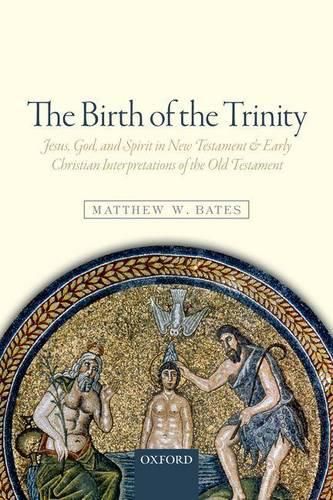Readings Newsletter
Become a Readings Member to make your shopping experience even easier.
Sign in or sign up for free!
You’re not far away from qualifying for FREE standard shipping within Australia
You’ve qualified for FREE standard shipping within Australia
The cart is loading…






How and when did Jesus and the Spirit come to be regarded as fully God? The Birth of the Trinity offers a new historical approach by exploring the way in which first- and second-century Christians read the Old Testament in order to differentiate the One God as multiple persons. The earliest Christians felt they could metaphorically overhear divine conversations between the Father, Son, and Spirit when reading the Old Testament. When these snatches of dialogue are connected and joined, they form a narrative about the unfolding interior divine life as understood by the nascent church. What emerges is not a static portrait of the triune God, but a developing story of divine persons enacting mutual esteem, voiced praise, collaborative strategy, and self-sacrificial love. The presence of divine dialogue in the New Testament and early Christian literature shows that, contrary to the claims of James Dunn and Bart Ehrman (among others), the earliest Christology was the highest Christology, as Jesus was identified as a divine person through Old Testament interpretation. The result is a Trinitarian biblical and early Christian theology.
$9.00 standard shipping within Australia
FREE standard shipping within Australia for orders over $100.00
Express & International shipping calculated at checkout
How and when did Jesus and the Spirit come to be regarded as fully God? The Birth of the Trinity offers a new historical approach by exploring the way in which first- and second-century Christians read the Old Testament in order to differentiate the One God as multiple persons. The earliest Christians felt they could metaphorically overhear divine conversations between the Father, Son, and Spirit when reading the Old Testament. When these snatches of dialogue are connected and joined, they form a narrative about the unfolding interior divine life as understood by the nascent church. What emerges is not a static portrait of the triune God, but a developing story of divine persons enacting mutual esteem, voiced praise, collaborative strategy, and self-sacrificial love. The presence of divine dialogue in the New Testament and early Christian literature shows that, contrary to the claims of James Dunn and Bart Ehrman (among others), the earliest Christology was the highest Christology, as Jesus was identified as a divine person through Old Testament interpretation. The result is a Trinitarian biblical and early Christian theology.